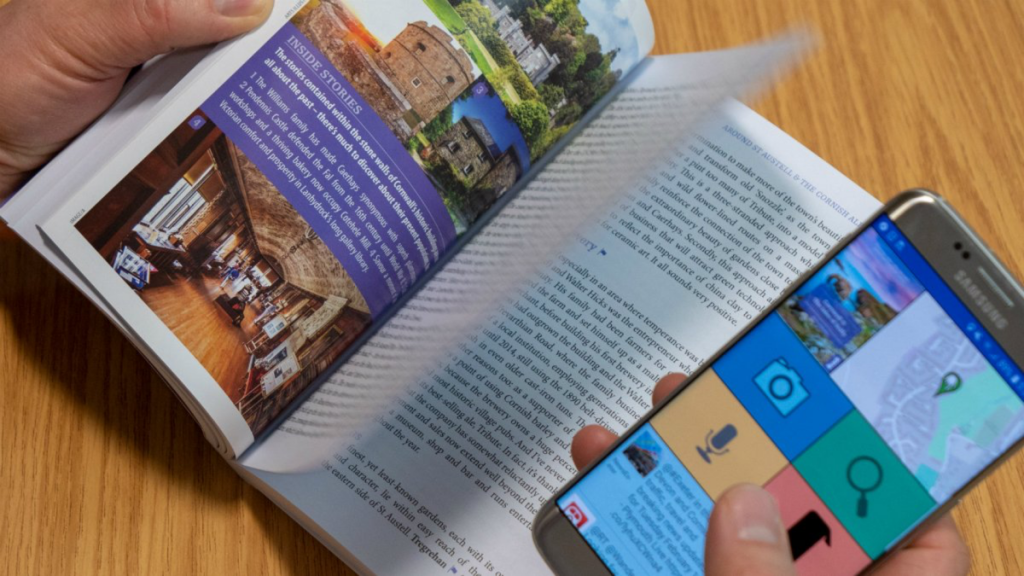Five researchers working on lifelong health in very different ways
The University of Surrey’s Lifelong Health Initiative promotes interdisciplinary research across a broad spectrum. Its aim is to improve health and boost wellbeing in an ageing society. Can an immunologist, mathematician, biochemist, communication designer and virologist work together on the same lifelong health theme?
Technological developments and healthcare innovations have led to an increasingly ageing population. At the turn of the century, the average life expectancy in the UK was 77.17 years, but by 2020 is has increased to 81.15. At first glance, living longer appears to be a good thing, but what about when we consider the quality of that life? What if the extra years the average human is expected to live are an extended period of ill health? The effects would be detrimental to the individuals living longer but would also place enormous strain on our healthcare systems and economy. Living longer is not necessarily a good thing.
The University of Surrey is home to the Lifelong Health strategic research theme. It is an interdisciplinary initiative that draws together a wide range of projects that all have one common aim: to keep us in good health as we grow older. Professor Deborah Dunn-Walters is the Lifelong Health Theme Champion at the University of Surrey, which means it is her role to support research and innovation relating to the theme. Herown research is focused on B cells and the role they play in the immune system, particularly as we age. (Take a look at her Futurum article.)
WHAT IS INTERDISCIPLINARY RESEARCH?
Interdisciplinary research combines aspects such as knowledge, information, tools, techniques, methods, expertise, perspectives and concepts from a range of disciplines to advance understanding.
The Lifelong Health Research Theme relies on interdisciplinary research to achieve its aims. It would be impossible to help people reach old age in healthy ways without making use of multiple scientific disciplines. Indeed, the benefits of interdisciplinary research extend into all areas of life – something that has become more evident in light of the recent COVID-19 pandemic. As Deborah explains: “We have biomedical scientists helping with testing and conducting research to identify therapeutics and gain more information to help vaccine development; psychologists helping people to cope with lockdown situations; business analysts assessing how the economy can recover; computer scientists working on diagnostics; and mechanical engineers using their workshops to design and make medical equipment.”
To address real-world problems it is essential to take a broader outlook and interdisciplinary research is a way to achieve this. “Sometimes a completely different perspective can push us off our rails and make us question whether our prior assumptions have a solid foundation in fact,” says Deborah. “Providing a new perspective from which to view things can help us approach problems from different angles.”
WHAT CAN INTERDISCIPLINARY RESEARCH TEACH YOU?
That differing viewpoints are necessary and that there is no truly correct pathway to address a problem or challenge. The University of Surrey’s Lifelong Health Research Theme currently involves around 200 projects. Here, we feature four researchers who are all working under the Lifelong Health theme but studying very different subjects in very different ways.
Professor Philip Aston is a mathematician and his research aims to help doctors identify cardiovascular problems in patients; Dr Dany Beste is a biochemist finding new ways to treat, cure and prevent tuberculosis; Dr Emily Corrigan-Kavanagh’s expertise is in communication design, and she is creating a series of interactive travel guides and photobooks that have the potential to improve wellbeing; and Dr Dan Horton is investigating the ways in which viruses spread within bat populations. Each of these four researchers have different backgrounds, interests and specialisms, but they, along with Deborah, are all joined by a common goal to help people lead healthier lives.
 DEBORAH DUNN-WALTERS
DEBORAH DUNN-WALTERS
Professor of Immunology
University Champion for Lifelong Health Research Theme, University of Surrey, UK
FIELD OF RESEARCH: Immunology
LIFELONG HEALTH RESEARCH THEME: The University of Surrey’s Lifelong Health Research Theme promotes interdisciplinary research across the spectrum from discovery science to population-based studies of health, wellbeing and care in both humans and animals.
Reference
https://doi.org/10.33424/FUTURUM65
The University of Surrey is home to the Lifelong Health strategic research theme. It is an interdisciplinary initiative that draws together a wide range of projects that all have one common aim: to keep us in good health as we grow older. Professor Deborah Dunn-Walters is the Lifelong Health Theme Champion at the University of Surrey, which means it is her role to support research and innovation relating to the theme. Herown research is focused on B cells and the role they play in the immune system, particularly as we age. (Take a look at her Futurum article.)
WHAT IS INTERDISCIPLINARY RESEARCH?
Interdisciplinary research combines aspects such as knowledge, information, tools, techniques, methods, expertise, perspectives and concepts from a range of disciplines to advance understanding.
The Lifelong Health Research Theme relies on interdisciplinary research to achieve its aims. It would be impossible to help people reach old age in healthy ways without making use of multiple scientific disciplines. Indeed, the benefits of interdisciplinary research extend into all areas of life – something that has become more evident in light of the recent COVID-19 pandemic. As Deborah explains: “We have biomedical scientists helping with testing and conducting research to identify therapeutics and gain more information to help vaccine development; psychologists helping people to cope with lockdown situations; business analysts assessing how the economy can recover; computer scientists working on diagnostics; and mechanical engineers using their workshops to design and make medical equipment.”
To address real-world problems it is essential to take a broader outlook and interdisciplinary research is a way to achieve this. “Sometimes a completely different perspective can push us off our rails and make us question whether our prior assumptions have a solid foundation in fact,” says Deborah. “Providing a new perspective from which to view things can help us approach problems from different angles.”
WHAT CAN INTERDISCIPLINARY RESEARCH TEACH YOU?
That differing viewpoints are necessary and that there is no truly correct pathway to address a problem or challenge. The University of Surrey’s Lifelong Health Research Theme currently involves around 200 projects. Here, we feature four researchers who are all working under the Lifelong Health theme but studying very different subjects in very different ways.
Professor Philip Aston is a mathematician and his research aims to help doctors identify cardiovascular problems in patients; Dr Dany Beste is a biochemist finding new ways to treat, cure and prevent tuberculosis; Dr Emily Corrigan-Kavanagh’s expertise is in communication design, and she is creating a series of interactive travel guides and photobooks that have the potential to improve wellbeing; and Dr Dan Horton is investigating the ways in which viruses spread within bat populations. Each of these four researchers have different backgrounds, interests and specialisms, but they, along with Deborah, are all joined by a common goal to help people lead healthier lives.
 DEBORAH DUNN-WALTERS
DEBORAH DUNN-WALTERS
Professor of Immunology
University Champion for Lifelong Health Research Theme, University of Surrey, UK
FIELD OF RESEARCH: Immunology
LIFELONG HEALTH RESEARCH THEME: The University of Surrey’s Lifelong Health Research Theme promotes interdisciplinary research across the spectrum from discovery science to population-based studies of health, wellbeing and care in both humans and animals.
LIFELONG HEALTH: ANALYSING ECG SIGNALS

PHILIP ASTON Professor of Mathematics
If a doctor has concerns about a person’s heart, they will ask for an electrocardiogram (ECG) which provides information on the electrical activity in the heart. This test enables the doctor to diagnose many conditions and put preventive measures in place. Blood pressure can also be monitored to show the doctor if there are any potential issues that can then be treated. It is a system that has worked for many years, but with the advent of new technologies, researchers are asking whether there is a way to improve it.
WHAT ARE THE FLAWS IN CURRENT TESTING METHODS?
One of the main issues is that ECG and blood pressure signals generate so much data that it is difficult to analyse all of it effectively. Professor Philip Aston is looking to improve the way in which this data is analysed. “ECG and blood pressure signals can be collected with sampling frequencies of up to 1000Hz, which means that 1,000 data points per second are recorded. That is a lot of data!” says Philip. “The current system generates a very small amount of summary information from a large number of data points.”
Philip recognises that more useful diagnostic information could come in the shape and variability of the waveform. It is known that a lack of variability from heartbeat to heartbeat is common with heart disease, so Philip has turned his attention to these markers in the hope of improving patient outcomes.
WHAT IS DIFFERENT ABOUT THE APPROACH PHILIP HAS TAKEN TO ANALYSING SUCH DATA?
At present, a very small summary is currently generated from a large amount of collected data. Philip’s approach involves analysing all of the data; this will inevitably lead to a more informed analysis and may pick up something that a less complete analysis would miss. “We take the signal and wrap it round on itself in a square box. If the signal is periodic and so repeats itself exactly for each heartbeat, then our method would trace out the same closed curve for each heartbeat,” says Philip. “However, physiological data is never exactly periodic and so our method traces out a shape (which we call an ‘attractor’) in the box.”
WHAT IMPACT WILL PHILIP’S RESEARCH HAVE ON CARDIOVASCULAR CARE?
Like the Lifelong Health Research Theme, Philip’s research is interdisciplinary, meaning he works closely with a physiologist at King’s College London whose focus is on the functioning of the heart. Their team takes a signal and turns it into an attractor image, making it easier to visualise changes in the signal – any potential problems with the heart would leap out at the person looking at the attractor image.
Excitingly, the attractor images can also provide an indication of the specific disease that a patient may have. The team achieves this by extracting information from the attractor image and feeding it into machine learning – which makes use of artificial intelligence that can detect patterns in large complex data sets. “Medical professionals may not be able to spot key aspects of a noisy signal that can differentiate between a healthy person and a person with a particular condition,” says Philip. “But machine learning does this very well, giving a better way of diagnosing a disease from the physiological signals.”
Ultimately, by making better use of the physiological data, data on the heart’s functioning, Philip’s research has the potential to make significant contributions to health and wellbeing, which is clearly in keeping with the University of Surrey’s Lifelong Health theme!
LIFELONG HEALTH: TACKLING TUBERCULOSIS

DANY BESTE Lecturer in Microbial Metabolomics
Tuberculosis (TB) is caused by bacteria known as Mycobacterium tuberculosis and remains the number one infectious disease globally. In 2018, for example, 10 million people fell ill with the disease worldwide, 1.1 million of whom were children. Scientists have made some headway in controlling TB. However, the emergence of antibiotic resistance is destabilising TB control measures and the COVID-19 pandemic is predicted to have a catastrophic impact on the global TB pandemic.
Dr Dany Beste is a lecturer in Microbial Metabolomics at the University of Surrey. Her work is primarily concerned with understanding more about the TB bacillus metabolic pathways and helping to develop strategies to treat TB.
WHY IS DANY’S RESEARCH FOCUSED ON THE TB BACILLUS METABOLIC PATHWAYS?
Everything needs to eat to survive and grow and the microbes that cause disease are no different. “The bacterium that causes TB has the formidable task of acquiring its meals within very hostile and variable environments within the human host,” explains Dany. “This even happens inside macrophages, which are the very cells designed to kill bacteria.”
If Dany and her team can find a way to understand the nutrients that the TB bacillus requires – and how the bacteria metabolises these nutrients – they can use that information to develop novel strategies that will effectively ‘starve’ TB to death.
WHAT HAS THE TEAM LEARNED SO FAR?
Unfortunately, the TB bacillus has extraordinary metabolic flexibility and is able to access a wide variety of different nutrients from the human host. The team’s research has led to what Dany calls TB’s metabolic Achilles’ heel, namely identifying the key enzymes required for Mycobacterium tuberculosis to survive in human host cells. The team is now beginning to use this information to develop anti-TB drugs.
HOW MIGHT DANY’S RESEARCH HELP SCIENTISTS FIND WAYS TO TACKLE ANTIBIOTIC RESISTANCE?
One strategy that has proven attractive to TB drug developers is the discovery of a class of drugs that increase the potential activity of existing antibiotics. These co-drugs inhibit the evolution of antibiotic resistance and therefore extend the life of the antibiotics that are currently available. “We have preliminary data to suggest that compounds that stimulate particular metabolic pathways may help achieve these goals,” says Dany. If researchers like Dany can work out how to tackle antibiotic resistance in TB, their findings will not only enable millions of people to live longer and healthier lives, but could give scientists the information they need to tackle antibiotic resistance overall.
LIFELONG HEALTH: NEXT GENERATION PAPERS

EMILY CORRIGAN-KAVANAGH Research Fellow in Communication Design
The 21st century has ushered in an era where it is possible to capture and share almost every moment of a life. Most of us own smartphones that have cameras we can use to take pictures of our friends and family; these images can then be uploaded to social platforms such as Instagram and Facebook. It is a way of creating memories and forging connections.
However, despite the technological leaps we have made since the turn of the century, there is still far more that can be done to enhance the experience of multimedia content. Dr Emily Corrigan-Kavanagh, a research fellow in communication design, is exploring ways of using 2G and 3G paper technology to create interactive travel guides and photobooks that will be more immersive than mere images on a screen.
WHAT IS NEXT GENERATION PAPER?
Next Generation Paper (NGP) is a type of augmented paper, which is linked to other multimedia content, such as audio, video, imagery and websites. It can be used to generate augmented books known as a-books. Emily is conducting user research to evaluate two types of augmented paper, developed with the help of a large multidisciplinary team from areas including interaction design, business innovation, and software and hardware development in 2G and 3G.
“2G uses visual recognition technology where a bespoke smartphone app allows any smart mobile device to recognise a-book layouts and fetch complementary digital media by taking a picture of its pages through the app,” explains Emily. “A-books with 3G paper contain wiring in the spine and touch-sensitive printed buttons depicting different media content throughout.” When the buttons are pressed, related digital content opens that can be played on a paired smartphone with the a-book app installed.
WHY DID THE RESEARCH TEAM CHOOSE TO FOCUS THIS NGP RESEARCH PROJECT ON TRAVEL AND TOURISM?
The content that people generate when they go on holiday can be beautiful. Images of the sea, sand, good food and beautiful vistas can all come together to create highly appealing content – and that’s just a 2D image on a screen! Imagine what it could be like with additional multimedia content that enables multisensory and immersive experiences.
“The a-books that we have worked on help expand how travellers and service providers can mediate and create holiday experiences together,” says Emily. “This leads to richer and more meaningful excursive moments.”
DOES EMILY’S WORK HAVE ANY WIDER APPLICATIONS, SUCH AS EDUCATION OR HEALTHCARE?
The potential behind the project is one of the most exciting and interesting aspects. Anything that can be displayed on 2D paper or packaging can be augmented as 2G paper, so the possible applications are virtually limitless. The textbooks that are used at school could be augmented with additional complementary multimedia, such as videos, to improve the learning experience. Equally, patient paper records could be linked to more details and their prescriptions to improve healthcare services and diagnostics.
HOW DOES THIS RESEARCH RELATE TO THE LIFELONG HEALTH THEME?
Enriching travel experiences, moments and memories will enrich life. By enhancing the ways in which people can capture, archive and share their experiences, it has the effect of making them more meaningful – this can only make a positive contribution to emotional wellbeing.
LIFELONG HEALTH: VIRAL PERSISTENCE IN BATS

DAN HORTON Senior Lecturer in Veterinary Virology and School of Veterinary Medicine Research Director
While it is possible that we will never entirely know how COVID-19 began, there have been repeated suggestions that it came from animals in a Wuhan wet market in China. Irrespective of the origin, one thing is clear – close interactions with wild animals can cause disease outbreaks in humans. As such, understanding the mechanisms behind these animal-borne diseases can help to prevent future outbreaks and save countless lives around the world.
Dr Dan Horton is a senior lecturer in veterinary virology at the University of Surrey. He is currently investigating viral persistence in bats in the hope of understanding why they are associated with some virus infections that can also affect humans (known as zoonoses).
WHY ARE BATS THE FOCUS OF DAN’S RESEARCH PROJECT?
Bats are fascinating creatures. They live in big groups and can fly long distances but, perhaps most interestingly, bats have been shown to have differences in their immune systems to other mammals. It has even been suggested that this might have something to do with the way they regulate their body temperatures – understanding more about bats could provide clues to help humans in a wide range of ways.
HOW ARE INFECTION DYNAMICS MODELLED?
Infection dynamics is a term that refers to the ways in which a virus spreads within and across populations. Dan’s team uses a mathematical model to make complicated calculations. “If we only had two bats in a cave and we knew how long one was infected for, we could work out the likelihood of it infecting the other,” explains Dan. “However, when there are thousands upon thousands of bats in many different caves it gets more complicated, so we need to use a computer program that can crunch the numbers from real-world data collected in the field.”
The particular study that Dan is working on uses more than 10 years’ worth of field data and follows bats into old age – not only will this provide a more accurate picture of the infection dynamics, it also helps show just how many late nights Dan and his team have had working with bats!
WHAT HAS DAN’S RESEARCH REVEALED SO FAR?
One of the bats Dan and his team studied were Daubenton’s Bats (Myotis daubentonii), which reside in the UK. It was a mystery how they could maintain an infection called European Bat Lyssavirus type 2, even though it is very rare to find a bat with the virus.
This particular infection can affect humans and is potentially very serious. “One theory we tested is that when bats hibernate the infection slows down so that infected bats can survive the winter,” says Dan. “What we showed was that bats in the UK can keep the infection going from year to year, but don’t usually live in big enough groups during the summer to keep it going, even if infected bats survive through the winter.”
The team thinks that the bats spread it to others during the autumn when bats from different roosts get together. Ultimately, this reassured Dan and his team that the infection in healthy bats is really rare in the UK.
WHAT CAN WE LEARN FROM DAN’S RESEARCH ABOUT THE SPREAD OF COVID-19?
There are numerous examples of cross species transmission of diseases caused by viruses, such as SARS, MERS, Ebola and HIV. Dan believes that viruses cross between species more frequently than we think, but because it rarely leads to a pandemic such as COVID-19, it is very difficult to predict which viruses are going to lead to serious diseases in humans.
“There are broadly two main ways to getting better at preventing disease outbreaks like COVID-19,” explains Dan. “One is to look for potentially important viruses in animals, and the other is to closely monitor the human population for new diseases.” The main lesson we can take from Dan’s research is that while we need to understand more about the viruses, we also have to understand the animals that carry those viruses. Dan’s work helps us to learn how to live alongside animals such as bats safely and without fear.





